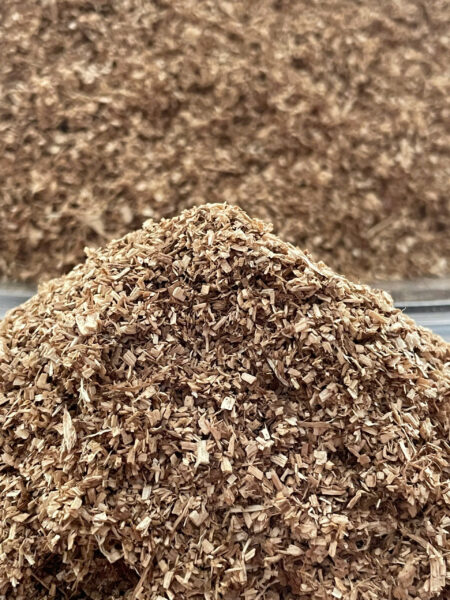Sawdust vs. Rice Straw: Why Sawdust Is the Best Substrate for Oyster Mushroom Cultivation
Oyster mushrooms (Pleurotus spp.) are a favorite among growers for their versatility and robust growth, but choosing the right substrate is critical for maximizing yields and quality. While rice straw is a common choice, sawdust stands out as the superior substrate for oyster mushroom cultivation due to its consistency, nutrient potential, and high yield capacity. Drawing on insights from expert sources like veshenka-expert.info, this SEO-optimized guide compares sawdust and rice straw, highlighting why sawdust is the best choice for both small-scale and commercial oyster mushroom farmers. Organized into clear sections with headings, this article provides practical advice to help you optimize your mushroom production.
Why Sawdust Excels for Oyster Mushroom Cultivation
Sawdust, a byproduct of woodworking, is the gold standard for growing oyster mushrooms, offering a reliable and nutrient-rich substrate when properly prepared. Unlike rice straw, which varies in quality and processing needs, sawdust provides a uniform texture that supports rapid mycelium colonization and consistent fruiting. According to veshenka-expert.info, sawdust’s ability to retain moisture (up to 69% when prepared correctly) creates an ideal environment for oyster mushrooms, especially when supplemented with nutrient-rich additives. Its availability, cleanliness, and adaptability make sawdust the top choice for achieving high yields and premium mushroom quality, setting it apart from rice straw in modern cultivation.
Sawdust Preparation: Ensuring Optimal Growth
Preparing sawdust for oyster mushrooms requires sterilization, a non-negotiable step to eliminate contaminants like molds and bacteria. Veshenka-expert.info emphasizes that sawdust must be sterilized using a pressure cooker or autoclave (175–350 cubic feet for large-scale operations) to ensure a clean substrate. After sterilization, sawdust can be soaked in hot water to achieve a moisture content of at least 69%, making it ready for inoculation. While this process requires equipment and precision, the result is a sterile, consistent substrate that supports vigorous mycelium growth, outperforming rice straw, which often faces contamination risks without proper pasteurization. Sawdust’s clean preparation process is a key reason it’s favored for high-yield oyster mushroom farming.
Nutrient Supplementation: Boosting Sawdust Yields
One of sawdust’s greatest advantages is its ability to be enhanced with nitrogen-rich supplements, significantly boosting oyster mushroom yields. Veshenka-expert.info notes that sawdust is naturally low in nitrogen, but adding wheat bran, rice bran, soybean meal, or alfalfa hay transforms it into a nutrient powerhouse. These supplements, while increasing the risk of contamination (hence the need for sterilization), provide the nutritional base for larger, healthier mushrooms. In contrast, rice straw has higher natural potassium but lacks the flexibility to support such robust supplementation, often resulting in lower yields after the first two flushes. Sawdust’s potential for nutrient customization makes it the best substrate for maximizing oyster mushroom production.
Yield and Efficiency: Sawdust Outperforms Rice Straw

Sawdust substrates consistently deliver higher yields compared to rice straw when properly managed. Veshenka-expert.info highlights that sawdust, when supplemented and sterilized, supports multiple flushes with greater biological efficiency, especially for strains like Pleurotus ostreatus and P. sajor-caju. While rice straw colonizes quickly and produces larger initial flushes, sawdust sustains more flushes over time due to its slower degradation, as noted in research from Bangladesh comparing substrates. Sawdust’s compact nature allows for efficient packing into 2–3 kg bags, increasing the number of blocks per growing area and boosting overall yield per square meter. This efficiency makes sawdust the preferred choice for commercial growers aiming for profitability.
Comparing Labor and Equipment Needs
While sawdust requires more upfront investment in sterilization equipment and labor for bagging, its long-term benefits outweigh these costs. Veshenka-expert.info explains that rice straw’s simpler pasteurization (via lime or hot water) is less equipment-intensive, but it’s prone to over-saturation, requiring additional steps to manage excess moisture. Sawdust, on the other hand, offers a streamlined process once sterilization is mastered, with mechanical presses speeding up bagging for large-scale operations. The precision of sawdust preparation reduces contamination risks, saving time and resources compared to rice straw’s messier handling and higher contamination potential. Sawdust’s efficiency in labor and cleanliness cements its status as the best substrate.
Sawdust vs. Rice Straw: A Side-by-Side Comparison
To highlight sawdust’s superiority, consider the key differences outlined by veshenka-expert.info. Rice straw is versatile, affordable, and easier to prepare with minimal equipment, making it suitable for small farms. However, its higher contamination risk, variable water retention, and limited flush potential restrict its scalability. Sawdust, while requiring sterilization and supplementation, offers higher yields, more flushes, and better flavor and texture, as supported by grower experiences on platforms like Shroomery. Its fine texture prevents clumping, ideal for oyster mushrooms that thrive on wood-based substrates. For farmers prioritizing quality and quantity, sawdust is the clear winner over rice straw.
Environmental and Economic Benefits of Sawdust
Sawdust’s sustainability and economic advantages further solidify its position as the best substrate for oyster mushrooms. As a woodworking byproduct, sawdust reduces waste, aligning with circular economy principles. Its availability in regions with active lumber industries ensures cost-effectiveness, especially when sourced locally. Veshenka-expert.info notes that sawdust’s high yield potential translates to greater profitability, offsetting the initial investment in sterilization equipment. Unlike rice straw, which may carry chemical residues from agricultural practices, natural sawdust is cleaner, enhancing mushroom safety and market appeal. By choosing sawdust, growers contribute to environmental sustainability while reaping economic rewards.
Conclusion: Sawdust Is the Ultimate Substrate for Oyster Mushrooms

For oyster mushroom cultivation, sawdust reigns supreme, offering unmatched yield potential, nutrient flexibility, and consistency. Its sterile preparation, ability to support multiple flushes, and compatibility with nitrogen-rich supplements make it the best choice for both hobbyists and commercial growers, as evidenced by expert insights from veshenka-expert.info. While rice straw has its place for low-budget operations, sawdust’s superior performance in quality, efficiency, and sustainability sets it apart. Invest in sawdust as your substrate and unlock the full potential of your oyster mushroom farm for a profitable and eco-friendly future.
Read more: https://vietnambestwood.com/general/growing-straw-mushrooms-using-sawdust/
